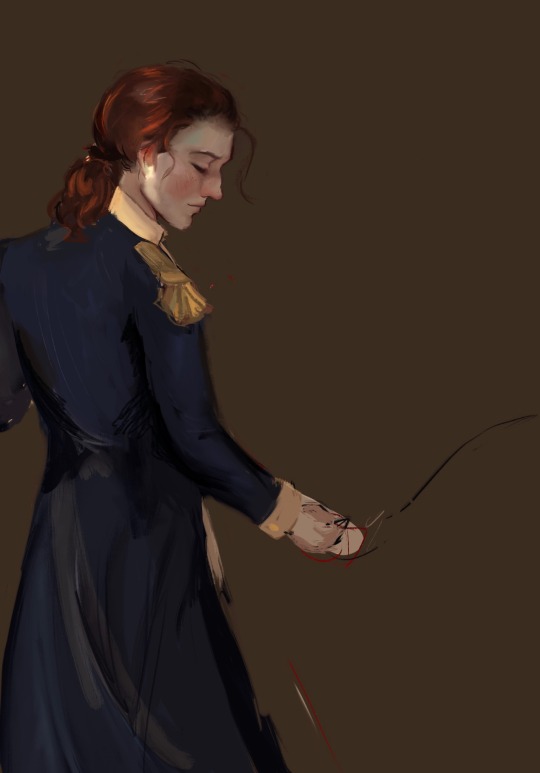Text
do you guys think they lost focus and had a consensual work place relationship ?
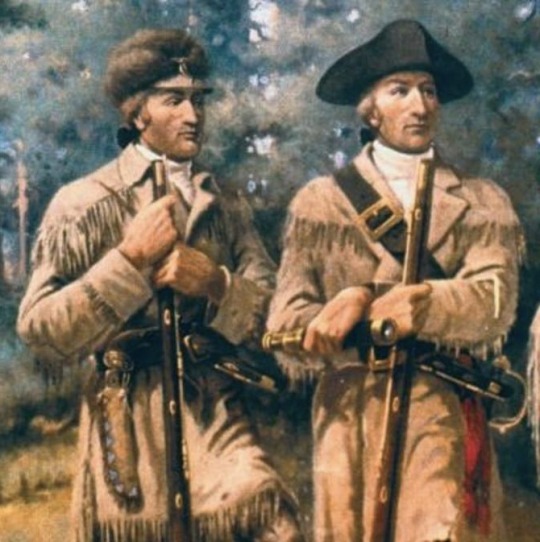
441 notes
·
View notes
Text
In the early 1830s, the daughter of an old friend of Dolley Madison’s visited her and James at Montpelier and later reported several anecdotes, such as this story about an encounter of Dolley’s little son with George Washington.
“Mrs. Madison told many incidents of her life in Philadelphia and Washington. [...] ‘One day in Philadelphia,’ she said, ‘I was sitting in my parlor with a very dear friend, Mrs. R. B. Lee, when in walked Payne Todd [her son] dressed in my calico bed-gown. While we were laughing at the figure he cut, the servant threw open the door and announced General and Mrs. Washington. What to do with that dreadful boy I didn’t know. He could not face the President in that garb. Neither could he leave the room without meeting them, for the door they were entering was the only one. I made him crawl quickly under a low, broad settee on which I was sitting. I had just time to arrange the drapery when the Washingtons entered. After the courtly greeting and the usual compliments of the season, there came from under the settee a heavy sigh, which evidently attracted the general’s notice. However, I only talked and laughed a little louder, hoping to divert his attention, when—oh me!—there came an outcry and a kick that could not be ignored. So I stooped down and dragged Payne out by the leg. General Washington’s dignity left him for once. Laugh? why he fairly roared! He nearly went into convulsions. The sight of that boy in that gown, all so unexpected, coming wrong end first from under my seat,—it was too much.’”
87 notes
·
View notes
Text
Tumblr pre-Hamilton: Four maybe five devoted history blogs, extremely inconsistent spasms of popular Founding Father posts, tags change every two weeks on a good interval, majority of consistent discussion has to do with HBO John Adams and Turn, Founding Father roleplaying blogs last two minutes and then die. If you've seen five new early American history posts in a week, you've seen it all. The posts circulate between the same ten people. 30 notes is a decent amount for a post. The circle of Tumblr historians is like a small seventeenth-century village; everybody knows (or has at least heard of) each other.
Tumblr post-Hamilton: Everybody and their mother suddenly knows (or at least thinks they know) everything about American history and has loved American history all their lives. New Founding Fathers fanart every 0.2 seconds. So many founding era posts that it's impossible to see and reblog everything. At least 300 notes is standard for a history post. Suddenly everybody knows about I Made America. Even people who have never batted an eyelash at musical theater or history get Founding Fathers on their dash. Lines between theater and history blogs are hopelessly blurred. Founding Father fandom is huge and tumultuous. Tumblr might never be the same.
HEY i FOUND THE LAST EDITABLE TEXT POST ON TUMBLR
2K notes
·
View notes
Text
I thought I would share some portraits/info about notable black men and women who worked and lived in Georgian Britain. This is not an extensive list by any means, and for some figures, portraits are unavailable:
1. Olaudah Equiano (1745-1797) was a writer, abolitionist and former slave. Born into what would become southern Nigeria, he was initially sold into slavery and taken to the Caribbean as a child, but would be sold at least twice more before he bought his freedom in 1766. He decided to settle in London and became involved in the British abolitionist movement in the 1780s. His first-hand account of the horrors of slavery 'The Interesting Narrative of the Life of Olaudah Equiano' was published in 1789 and it really drove home the horrors of slavery to the general British public. He also worked tirelessly to support freed slaves like himself who experienced racism and inequality living in Britain's cities. He was a leading member of the Sons of Africa, an abolitionist group, whose members were primarily freed black men (the Sons of Africa has been called the first black political organisation in British history). He married an English woman, Susannah, and when he died in 1797, he left his fortune of roughly £73,000 to his daughter, Joanna. Equiano's World is a great online resource for those interested in his life, his work, and his writings.

2. Ignatius Sancho (1729-1780) was a bit of a jack-of-all-trades (he's described as an actor, composer, writer, abolitionist, man-of-letters, and socialite - truly the perfect 18th century gentleman). He was born in the Middle Passage on a slave ship. His mother died not long after they arrived in Venezuela and his father apparently took his own life rather than become a slave. Sancho's owner gave the boy to three sisters living in London c. 1730s (presumably as a sort of pet/servant) but whilst living with them, his wit and intellect impressed the 2nd Duke of Montagu who decided to finance his education. This was the start of Sancho's literary and intellectual career and his association with the elite of London society saw him ascend. He struck up a correspondence with the writer, Laurence Sterne, in the 1760s: Sancho wrote to press Sterne to throw his intellecrual weight behind the cause of abolition. He became active in the early British abolitionist movement and be counted many well-known Georgians amongst his acquaintance. He was also the first black man known to have voted in a British election. He married a West Indian woman and in 1774, opened a grocer's shop in London, that attempted to sell goods that were not produced by slave labour. Despite his popularity in Georgian society, he still recounts many instances of racist abuse he faced on the streets of London in his diaries. He reflected that, although Britain was undoubtedly his home and he had done a lot for the country, he was 'only a lodger and hardly that' in London. His letters, which include discussions of domestic subjects as well as political issues, can be read here.

3. Francis 'Frank' Barber (1742-1801) was born a slave on a sugar plantation in Jamaica. His owner, Richard Bathurst, brought Frank to England when Frank turned 15 and decided to send him to school. The Bathursts knew the writer, Samuel Johnson, and this is how Barber and the famous writer first met (Barber briefly worked as Johnson's valet and found him an outspoken opponent of the slave trade). Richard Bathurst gave Frank his freedom when he died and Frank immediately signed up for the navy (where he apparently developed a taste for smoking pipes). In 1760, he returned permanently to England and decided to work as Samuel Johnson's servant. Johnson paid for Frank to have an expensive education and this meant Frank was able to help Johnson revise his most famous work, 'Dictionary of the English Language.' When Johnson died in 1784, he made Frank his residual heir, bequeathing him around £9000 a year (for which Johnson was criticised in the press - it was thought to be far too much), an expensive gold watch, and most of Johnson's books and papers. Johnson also encouraged Frank to move to Lichfield (where Johnson had been born) after he died: Frank duly did this and opened a draper's shop and a school with his new wife. There, he spent his time 'in fishing, cultivating a few potatoes, and a little reading' until his death in 1801. His descendants still live at a farm in Litchfield today. A biography of Frank can be purchased here. Moreover, here is a plaque erected on the railings outside of Samuel Johnson's house in Gough Square, London, to commemorate Johnson and Barber's friendship.
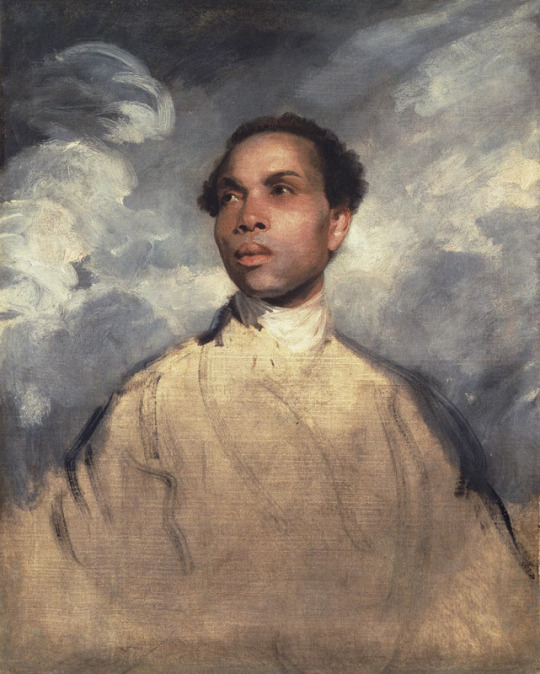
4. Dido Elizabeth Belle (1764-1801) was born to Maria Belle, a slave living in the West Indies. Her father was Sir John Lindsay, a British naval officer. After Dido's mother's death, Sir John took Dido to England and left her in the care of his uncle, Lord Mansfield. Dido was raised by Lord Mansfield and his wife alongside her cousin, Elizabeth Murray (the two became as close as sisters) and was, more or less, a member of the family. Mansfield was unfortunately criticised for the care and love he evidently felt for his niece - she was educated in most of the accomplishments expected of a young lady at the time, and in later life, she would use this education to act as Lord Mansfield's literary assistant. Mansfield was Lord Chief Justice of England during this period and, in 1772, it was he who ruled that slavery had no precedent in common law in England and had never been authorised. This was a significant win for the abolitionists, and was brought about no doubt in part because of Mansfield's closeness with his great-niece. Before Mansfield died in 1793, he reiterated Dido's freedom (and her right to be free) in his will and made her an heiress by leaving her an annuity. Here is a link to purchase Paula Byrne's biography of Dido, as well as a link to the film about her life (starring Gugu Mbatha-Raw as Dido).

5. Ottobah Cugoano (1757-sometime after 1791) was born in present-day Ghana and sold into slavery at the age of thirteen. He worked on a plantation in Grenada until 1772, when he was purchased by a British merchant who took him to England, freed him, and paid for his education. Ottobah was employed as a servant by the artists Maria and Richard Cosway in 1784, and his intellect and charisma appealed to their high-society friends. Along with Olaudah Equiano, Ottobah was one of the leading members of the Sons of Africa and a staunch abolitionist. In 1786, he was able to rescue Henry Devane, a free black man living in London who had been kidnapped with the intention of being returned to slavery in the West Indies. In 1787, Ottobah wrote 'Thoughts And Sentiments On The Evil & Wicked Traffic Of The Slavery & Commerce Of The Human Species,' attacking slavery from a moral and Christian stand-point. It became a key text in the British abolition movement, and Ottobah sent a copy to many of England's most influential people. You can read the text here.
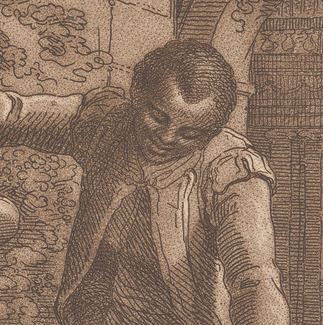
6. Ann Duck (1717-1744) was a sex worker, thief and highwaywoman. Her father, John Duck, was black and a teacher of swordmanship in Cheam, Surrey. He married a white woman, Ann Brough, in London c. 1717. One of Ann's brothers, John, was a crew-member of the ill-fated HMS Wager and was apparently sold into slavery after the ship wrecked off the coast of Chile on account of his race. Ann, meanwhile, would be arrested and brought to trial at least nineteen times over the course of her lifetime for various crimes, including petty theft and highway robbery. She was an established member of the Black Boy Alley Gang in Clerkenwell by 1742, and also quite frequently engaged in sex work. In 1744, she was given a guilty verdict at the Old Bailey after being arrested for a robbery: her trial probably wasn't fair as a man named John Forfar was paid off for assisting in her arrest and punishment. She was hanged at Tyburn in 1744. Some have argued that her race appears to have been irrelevant and she experienced no prejudice, but I am inclined to disagree. You can read the transcript of one of Ann Duck's trials (one that resulted in a Not Guilty verdict) here. Also worth noting that Ann Duck is the inspiration behind the character Violet Cross in the TV show 'Harlots.'
7. Bill Richmond (1763-1829) was a prize winning bare-knuckle boxer of the late 18th and early 19th century. He was born a slave in New York (then part of British America) but moved permanently to England in 1777 where he was most likely freed and received an education. His career as a boxer really took of in the early 19th century, and he took on all the prize fighters of the time, including Tom Cribb and the African American fighter, Tom Molineaux. Richmond was a sporting hero, as well as fashionable in his style and incredibly intelligent, making him something of a celebrity and a pseudo-gentleman in his time. He also opened a boxing academy and gave boxing lessons to gentlemen and aristocrats. He would ultimately settle in York to apprentice as a cabinet-maker. Unfortunately, in Yorkshire, he was subject to a lot of racism and insults based on the fact he had married a white woman. You can watch a Channel 4 documentary on Richmond here: 1, 2, 3, 4, 5
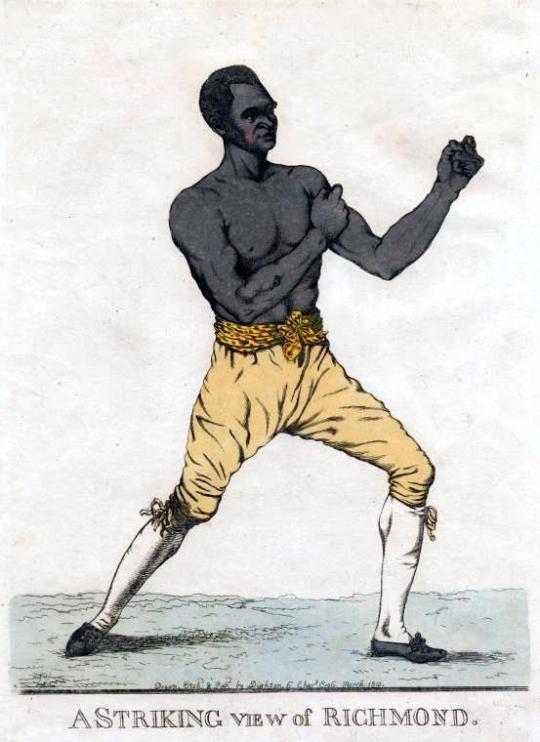
8. William Davidson (1781-1820) was the illegitimate son of the Attorney General of Jamaica and a slave woman. He was sent to Glasgow in Scotland to study law at the age of 14 and from this period until 1819, he moved around Britain and had a number of careers. Following the Peterloo Massacre in 1819, Davidson began to take a serious interest in radical politics, joining several societies in order to read radical and republican texts. He also became a Spencean (radical political group) through his friendship with Arthur Thistlewood and would quickly rise to become a leading member of the group. In 1820, a government provocateur tricked Davidson and other Spenceans, into being drawn into a plot to kill the Earl of Harrowby and other government cabinet officers as they dined at Harrowby's house on the 23rd February. This plot would become known as the Cato Street Conspiracy (named thus because Davidson and the other Spenceans hid in a hayloft in Cato Street whilst they waited to launch their plan). Unfortunately, this was a government set up and eleven men, including Davidson, were arrested and charged with treason. Davidson was one of five of the conspirators to not have his sentence commuted to transportation and was instead sentenced to death. He was hanged and beheaded outside of Newgate Prison in 1820. There is a book about the Cato Street Conspiracy here.
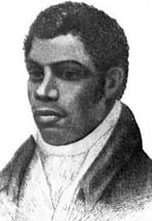
9. Ukawsaw Gronniosaw (1705-1775) was born in the Kingdom of Bornu, now in modern day Nigeria. As the favourite grandson of the king of Zaara, he was a prince. Unfortunately, at the age of 15, he was sold into slavery, passing first to a Dutch captain, then to an American, and then finally to a Calvinist minister named Theodorus Frelinghuysen living in New Jersey. Frelinghuysen educated Gronniosaw and would eventually free him on his deathbed but Gronniosaw later recounted that when he had pleaded with Frelinghuysen to let him return to his family in Bornu, Frelinghuysen refused. Gronniosaw also remembered that he had attempted suicide in his depression. After being freed, Gronniosaw set his sights on travelling to Britain, mainly to meet others who shared his new-found Christian faith. He enlisted in the British army in the West Indies to raise money for his trip, and once he had obtained his discharge, he travelled to England, specifically Portsmouth. For most of his time in England, his financial situation was up and down and he would move from city to city depending on circumstances. He married an English weaver named Betty, and the pair were often helped out financially by Quakers. He began to write his life-story in early 1772 and it would be published later that year (under his adopted anglicised name, James Albert), the first ever work written by an African man to be published in Britain. It was an instant bestseller, no doubt contributing to a rising anti-slavery mood. He is buried in St Oswald's Church, Chester: his grave can still be visited today. His autobiography, A Narrative of the Most Remarkable Particulars in the Life of James Albert Ukawsaw Gronniosaw, an African Prince, as Related by Himself, can be read here.
10. Mary Prince (1788-sometime after 1833) was born into slavery in Bermuda. She was passed between several owners, all of whom very severely mistreated her. Her final owner, John Adams Wood, took Mary to England in 1828, after she requested to be able to travel as the family's servant. Mary knew that it was illegal to transport slaves out of England and thus refused to accompany Adams Wood and his family back to the West Indies. Her main issue, however, was that her husband was still in Antigua: if she returned, she would be back in enslavement, but if she did not, she might never see her husband again. She contacted the Anti-Slavery Society who attempted to help her in any way they could. They found her work (so she could support herself), tried tirelessly to convince Adams Wood to free her, and petitioned parliament to bring her husband to England. Mary successfully remained in England but it is not known whether she was ever reunited with her husband. In 1831, Mary published The History of Mary Prince, an autobiographical account of her experiences as a slave and the first work written by a black woman to be published in England. Unlike other slave narratives, that had been popular and successful in stoking some anti-slavery sentiment, it is believed that Mary's narrative ultimately clinched the goal of convincing the general British population of the necessity of abolishing slavery. Liverpool's Museum of Slavery credits Mary as playing a crucial role in abolition. You can read her narrative here. It is an incredibly powerful read. Mary writes that hearing slavers talk about her and other men and women at a slave market in Bermuda 'felt like cayenne pepper into the fresh wounds of our hearts.'
3K notes
·
View notes
Note
Could you tell us about Hamilton's relationship with his children? I know he closed himself even more after Philip's death, but what about the other 7? Was he close to them?
All sources from Alexander Hamilton by Ron Chernow.
Of Alexander and Eliza’s eight children–Philip Hamilton, Angelica Hamilton, Alexander Hamilton Jr., James Alexander Hamilton, John Church Hamilton, William S. Hamilton, Eliza Hamilton and “Little Phil” Hamilton–not one appeared to utter a single unkind word about their father.
On January 22, 1782, Eliza gave birth to a son, named Philip Hamilton. On his birth, Alexander Hamilton wrote, “whose birth, as you may imagine, was attended with all the omens of future greatness.” He used to rock Philip’s cradle and played with the infant. At seven months, “it is agreed on all hands that he is handsome, his features are good, his eye is not only sprightly and expressive, but it is full of benignity. His attitude in sitting is by connoisseurs esteemed graceful and he had a method of waving his hand that announces the future orator. He stands however rather awkwardly and his legs have not at all the delicate slimness of his father’s… If he had any fault in manners, he laughs too much.”
On September 25th, 1784, the Hamiltons had their first daughter named Angelica. Their third child, Alexander was born on May 16th, 1786. Due to Hamilton’s busyness, Eliza ran the household and supervised the education of their children when they were small.
According to Ron Chernow, fourth born James Alexander Hamilton was their “favorite child”. Eliza gave birth to James Alexander on April 14th. While at Columbia, James frequently sought his fathers advice, urging him to review speeches had had written and etc.
On October 12, 1788, the Hamiltons went down to the end of Wall Street and had Philip, Angelica and Alexander all baptized at the same time at Trinity Church.
James Hamilton said,
“His [Alexander Hamilton sr.] gentle nature rendered his house a most joyous one to his children and friends. He accompanied his daughter Angelica when she played and sang at the piano. His intercourse with his children was always affectionate and confiding, which excited in them a corresponding confidence and devotion.”
Angelica Hamilton was very musical inclined and her father had Angelica Church find the best piano that she could find his daughter. When they were in separate cities, Hamilton usually kept one of the younger boys with him. He worried much about his children and enjoyed tutoring them. He had high expectations and wanted them to exceed. 1791, age nine, Philip and Alexander Jr. were sent off to boarding school in Trenton. Hamilton wrote this to his Philip:
“Your teacher also informs me that you recited a lesson the first day you began, very much to his satisfaction. I expect every letter from him will give me a fresh proof of your progress, for I know you can do a great deal if you please. And I am sure you have too much spirit not to exert yourself that you may make us every day more and more proud of you.”
A letter to his daughter, Angelica:
“I was very glad to learn, my dear daughter, that you were going to begin the study of the French language. We hope you will in every respect behave in such a manner as will secure to you the goodwill and regard of all those with whom you are. If you happen to displease any of them, be always ready to make a frank apology. But the best way is to act with so much politeness, good manners and circumspection as never to have an occasion to make any apology. Your mother joins in best love to you. Adieu, my very dear daughter.”
On August 22nd, 1792 Eliza gave birth to their fifth child, John Church Hamilton. In 1784, John began several ill and Hamilton–who scarcely asked for a vacation–pleaded with Washington to allow him “permission to make an excursion into the country for a few days to try the effect of exercise and change of air upon the child.”
A couple months after publishing the Reynold’s pamphlet, Hamilton had a scare after Philip nearly died of severe fever of some sort of typhus. In tending to Philip, Hamilton was both nurse and physician, leaving the doctor amazed by both his medical knowledge and his closeness towards his children. When he learned his son was to be well, the doctor said there were tears in the father’s eyes.
On August 4th, 1797, Eliza gave birth to a healthy baby, William Stephen Hamilton.
On multiple occasions, Hamilton would have his six year old son John Church write his letters for him, taking bizarre precaution to that his letters would not bear his handwriting during his plots in the Adams cabinet.
Smart Philip Hamilton walked in the footsteps of his father. He graduated in 1800 with high honors, was a good speaker and studied to be a lawyer. Hamilton regarded Philip as the family’s “eldest and brightest hope”. Hamilton had a prepared daily schedule for Philip that included writing, reading, church and ruled his waking moments from dawn to dusk. Philip did have reliance and rebellious streak which his father tolerated, “I am anxious to here from Philip. Naughty young man.” Before Philip’s duel with George Eacker,, he sought counsel from his father who told him that he should throw away his shot on the dueling ground. At the duel, Philip followed his father’s advise and did not raise his pistol at the command to fire. Eacker mirrored and they stood dumbly staring at one another. Finally, Eacker lifted his pistol and Philip did like wise. Eacker then shot Philip and he fell.
When Alexander Hamilton learned of what had occurred, he called for Dr. Hosack who later recalled that Hamilton was “so much overcome by his anxiety that he fainted and remained for some time in my family before he was sufficiently recovered to proceed.” The entire night, Alexander stayed with Philip at his bedside, and when he had to approach his son’s gravestone, his friends had to help him stand. Seventeen-year-old Angelica Hamilton who was extremely close with her brother suffered a mental breakdown and her father tried to restore her health. He got others to send her watermelons and birds (she liked birds), this didn’t work and she only grew worse.
After Philip’s death he fell into the deepest depression he had ever felt. Usually in his grief, he was able to publish papers and worked endlessly. This time, Hamilton was unable to write any more and did not respond to any of his correspondence for four months. Even his physical appearance was altered, always appearing troubled, melancholy and the childish glean that flinted across his eyes, had parted.
When Eliza went off to care for his father (her mother had recently passed) and Hamilton took care of their children at home.
In Hamilton’s duel with Burr, he used to very same dueling pistols that Eacker and Philip had used–a pair of guns that had caused the death of his son. It is possible Hamilton wanted to use to pistols as a homage to his son.
On his death bed, Hamilton had not been able to see his children until it was time to bid farewell. “She held up their two-year-old boy, Philip, to his lips for a final kiss. Then Eliza lined up all seven children at the foot of the bed so that Hamilton could see them in one final tableau, a sight that rendered him speechless.” According to the doctor, “he opened his eyes, gave them one look, and closed them again till they were taken away.” At his funeral on July 14th, 1804, the procession was followed by two of Hamilton’s oldest sons, James Alexander and Alexander Jr. Angelica Hamilton, four-year-old Eliza Hamilton and Philip Hamilton stayed with their mother, whom was not at the funeral. Gouverneur Morris gave the eulogy and sitting beside him on the stage weeping was Alexander (eighteen), James (fourteen), John (eleven) and William (six).
“The scene was impressive and what added unspeakably to its solemnity was the mournful ground of tender boys, the sons, the once hopes and joys of the deceased, who, with tears gushing from their eyes, sat upon the stage, at the feet of the orator, bewailing the loss of their parent! It was too much. The sternest powers, the bloodiest villain, could not resist the melting scene.”
Of their five sons post-duel they all gravitated towards law, government and military (the Hamiltonian way).
Angelica Hamilton lived under a physicians care and died in 1857.
Alexander Jr. Hamilton graduated from Columbia University weeks after his father’s duel. He became a lawyer, fought over seas in the duke of Wellington’s army, returned to America as an infantry captain during the War of 1812, and wound up as US district attorney in New York. He represented Eliza Jumel when she divorced Aaron Burr.
James Alexander Hamilton graduated from Columbia, served as an officer in the War of 1812 and was an acting secretary of state under President Andrew Jackson (and surprising was against the second bank of the United States) and became attorney for the southern district of New York. He developed a close relationship with Martin Van Buren and was an early supporter of emancipation of slaves. As a tribute to his father, he created a home which he called “Nevis”.
John Church Hamilton was a lawyer who fought in the War of 1812, and devoted decades to writing a biography of his father and sorting throughout his papers.
William Stephen Hamilton was “charming, handsome and eccentric”. He studied at West Point, fought at Black Hawk War, surveyed lands in Illinois and lived on the Western frontier. In 1849, he was drawn to California because of the gold rush, and opened a store to sell supplies. He died there of Cholera in 1850.
Eliza Hamilton cared for her mother in her later years and scolded her brother John at getting the seven volume biography done quicker.
“Little Phil” Hamilton was a “kindhearted, sensitive man”. He married the daughter of Louis McLane, daughter of a member of Andrew Jackson’s cabinet. He served as an assistant US attorney under his brother James but leaned on altruistic pursuits and was a reputation of “lawyer of the poor”.
618 notes
·
View notes
Note
Why does the Hamilton play pretend Burr didnt believe in anything if he believes all the stuff you say he does?
Because the play uses Ron Chernow’s book as a base, and Ron Chernow is an idiot who can’t do basic research on historical figures outside of whatever Super Epic Manly Man protagonist he’s projecting himself onto.
-
Political rivals have always said whatever they can to make the other side look as unappealing as possible.
It's often grossly exaggerated, painted in a ‘if you vote for this candidate the world is GOING TO END” sort of way to condition you into thinking voting for a specific candidate in a run-of-the-mill election cycle would be the worst decision you ever made in your life. Like right now, the Republicans are calling Biden a Communist AND a Socialist purely because they have a negative association to those terms, despite the fact that a person can literally not be both of those things at once). This sort of tactic only really works on voters who don’t follow politics closely, though.
In actuality, Hamilton was SUPER fear-monger-y about Burr BECAUSE he knew what he believed--mainly Pro-French, Pro-Immigration & Anti-Monopoly--which were all stances that he hated. These were ‘extremist’ views in his eyes. Burr was also Pro-Women, Pro-Equal Education, Pro-Native People which, even by Democratic-Republican standards, was extreme. Hamilton did NOT want him to get power.
Hamilton harped particularly hard about Burr’s ‘influence’ over young men (highly implying that Burr was gay (or a pedophile) & therefore a degenerate).
-
But the main reason (I assume) that Burr is portrayed that way is because Burr really did not leave a lot of written work behind. We have two volumes of his work, that’s it. But we still KNOW what he believed. Ron Chernow just didn’t give enough of a shit to look.
209 notes
·
View notes
Text
not to be posting hot takes from 2010 on here but why are some of yall acting like burr just walked up to hamilton and shot him in cold blood for no reason lmao dude knew what a duel was he knew what he agreed to and he shouldnt have been out there sabotaging burr’s life at every possible opportunity like he’s lucky burr even gave him the dignity of death in a duel bc i wouldve just beat him to death in the street
120 notes
·
View notes
Text

Unmasking - Phantom of the Opera but it’s the 18th century
I really hope you’ll like this one! I feel like I’ve improved a lot this past year T-T Also I want to be paid to turn this into a graphic novel
4K notes
·
View notes
Text
I LOWKEY HATE THAT THE JOHN LAURENS TAG IS FILLED WITH HAMILTON THE MUSICAL ‼️🤬
Like bruh i really gotta specify "historical"
I- 💀💀
63 notes
·
View notes
Text
“For God’s sake write me frequently and long letters, and speak chiefly about yourself and your private circumstances.”
— Marquis de Lafayette to General Washington 12 June 1778
632 notes
·
View notes
Text
youtube
Kill your quarantine boredom with a discussion of Lafayette’s passion for human rights. AFL member and Lafayette College board member Diane Shaw always gives great info.
21 notes
·
View notes
Text
“Once Washington received young Lafayette, he displayed boundless generosity toward him. Discarding earlier caution, he informed Madison that if circumstances permitted, he would take the boy ‘with his tutor into my family and, in the absence of his father, to superintend his education and morals.’ The sight of the boy and the 'visible distress’ on his face deeply moved Washington. After hearing his heartrending pleas on his father’s behalf, Washington decided, strictly as a private person, to dispatch a handwritten letter to the Austrian emperor, requesting that Lafayette be released and allowed to come to America.”
— Washington: A Life by Ron Chernow, pg. 738. Georges had to suffer with the uncertainty of help from the very people who professed to care about his father. Poor bean.
35 notes
·
View notes
